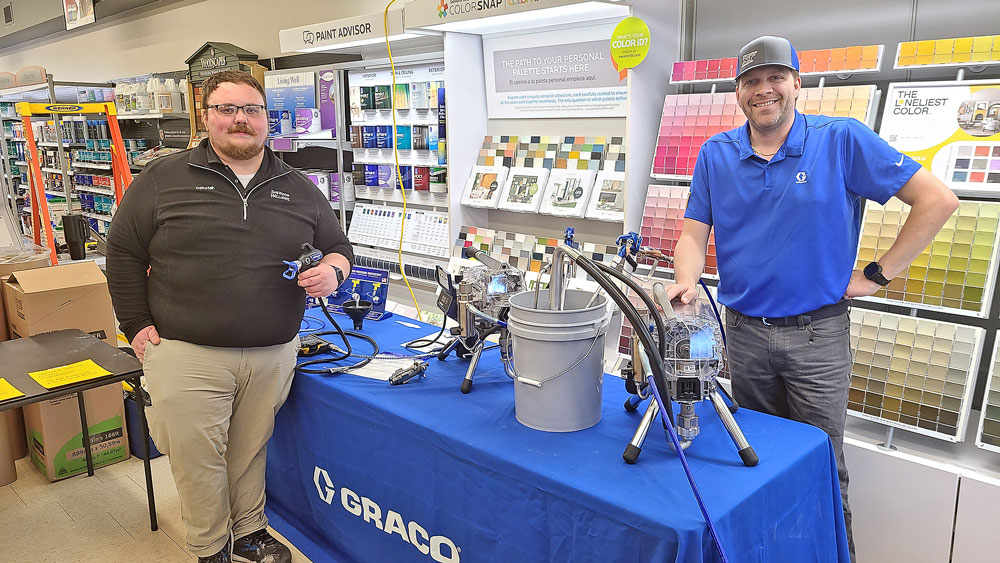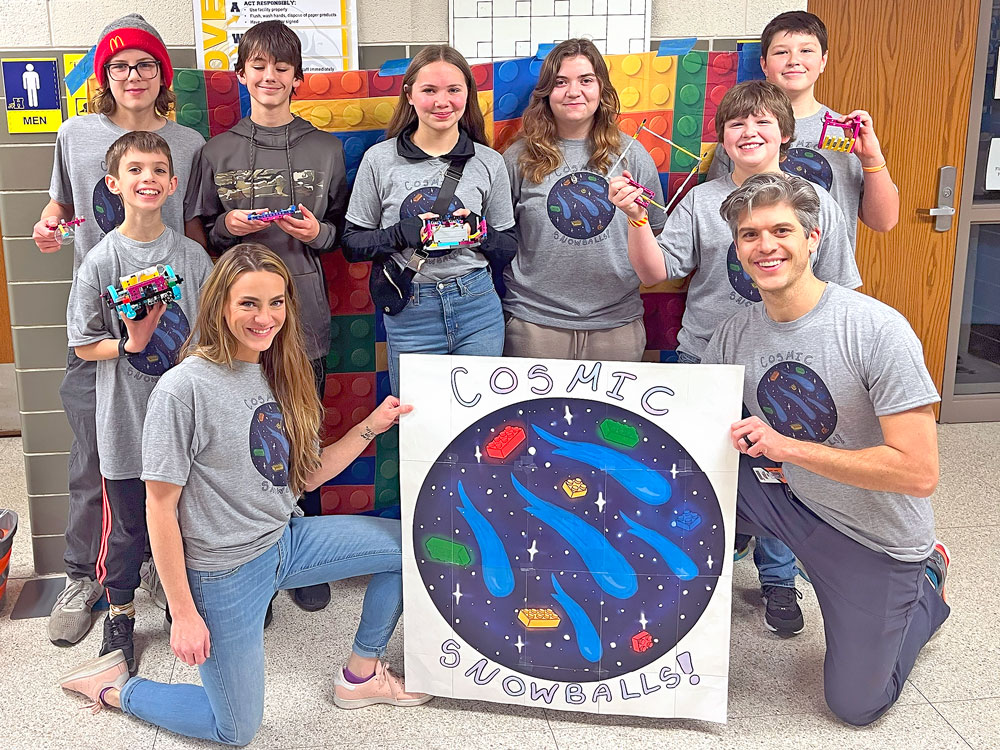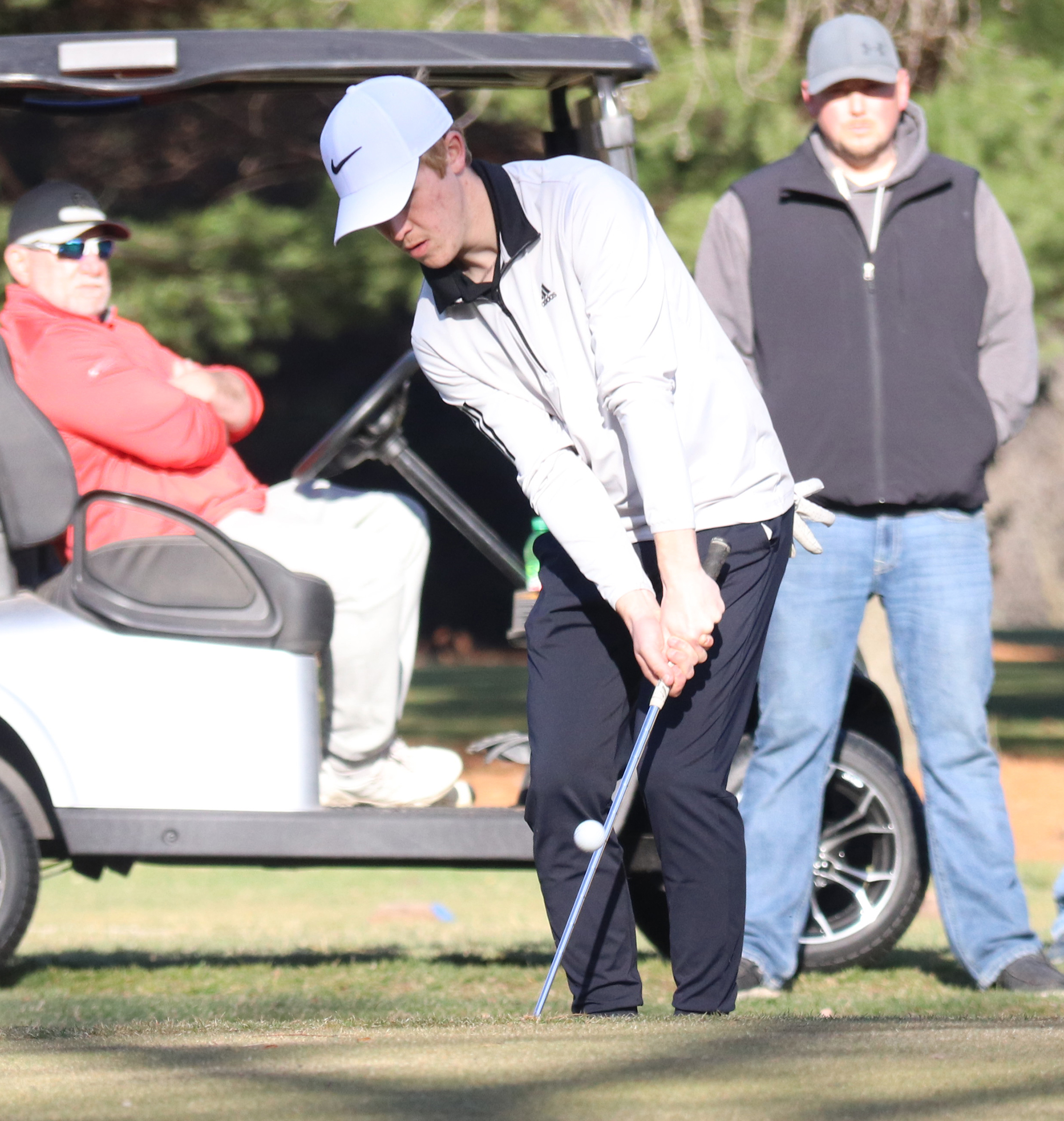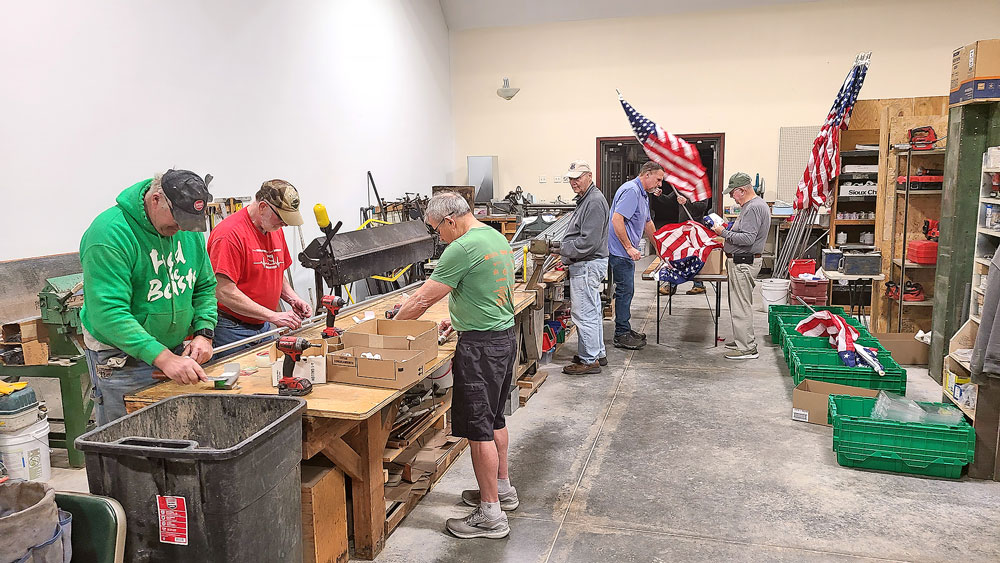NIACC president: Charles City Career Center could start construction this spring

By Bob Steenson, bsteenson@charlescitypress.com
Construction of a new high school career center near Charles City could begin this spring, with a potential opening in the fall of 2023.
That timetable will depend on fundraising, said North Iowa Area Community College President Steve Schulz. But with a $1 million state grant to begin with and local fundraising starting off well, he said he is optimistic the construction project can go out for bids no later than April.
 Schulz gave an update and overview of the career academy project as the program for the Charles City Rotary Club’s regular Monday noon meeting this week.
Schulz gave an update and overview of the career academy project as the program for the Charles City Rotary Club’s regular Monday noon meeting this week.
The Charles City Career Center will offer college credit to high school students in four subject “academies” currently identified by Iowa Workforce Development as areas where workers are most in demand regionally — advanced manufacturing, construction trades, information technology and health careers.
After attending classes and training for one year in the career academy, students will graduate high school and the academy with certificates in various skills that are in demand and they could enter the workforce directly, Schulz said.
But they will also have completed the first year of a NIACC two-year technical training program and could go on to complete the program at NIACC, earning an associates degree, specialist certificate or other accreditation in just one more year.
That year of college credit at the career center will be essentially free to the students and to their families, with no extra charge for tuition, textbooks, tools and equipment.
Schulz said the Iowa Legislature had set a goal to place a career academy within 30 miles of every high school in the state, and provided funding to help make that possible.

NIACC received the first state grant for $1 million, which it used as a funding start for the John V. Hanson Career Center in Forest City that opened in October. NIACC also received the third $1 million state grant, which will go toward the Charles City Career Center.
“The interesting thing about this one is it will cross seven school districts and three community college districts,” Schulz said. “This is kind of new territory. We defend our borders pretty strongly in the state of Iowa. The colleges and the high schools are no different.”
The three community college districts are NIACC, Northeast Iowa Community College and Hawkeye Community College.
Participating school districts in the career center will be Charles City, Riceville, Osage, Rudd-Rockford-Marble Rock, Nashua-Plainfield, North Butler and Clarksville.
The career center will be built on land donated by the Floyd County Fairgrounds, east of the fairgrounds.
“The superintendents are really excited about it because these people are coming from all over. They just drop off the Avenue and they’ll be right there. They don’t have to wind their way through town,” Schulz said.
“We think there’s some synergy with the fairgrounds and the community, as well as for our center and access to that fairgrounds property. We think it’s a pretty good location,” he said.
One question that has come up is what will NIACC do with the college’s classrooms and offices located in its center downtown off Brantingham Street, next to the city’s Hy-Vee parking lot.
“We plan to sell that,” Schulz said. “We did an assessment – it’s worth about a half million dollars. We plan to sell that and invest the funds in the new facility, and transition all those services out to the fairgrounds.”
He said there will likely be more opportunities for continuing education and community education at the new building than there is at the downtown center now, and he expects a high demand for access to the facility.
The Charles City academy will be about 18,500 to 20,000 square feet, and will cost around $6 million to $6.5 million, Schulz said.

“It will be a significant build and a significant footprint out there,” he said.
The project has raised about $300,000 toward the academy already. With the state’s $1 million grant and $500,000 for the sale of the building, that puts it at potentially $1.8 million so far, he said.
The goal is to raise between $1 million and $2 million in the area – “You might have somebody knocking on your door in the near future asking you to contribute to this project, and we hope you’ll at least give them a listen and see what you think of it,” he told the Rotary Club members.
“Whatever we don’t raise, the college is going to have to come over the top and finish that off,” he said.
In March 2020, voters in the NIACC district approved a $15 million bond referendum for the community college, by a 77% majority. About $5 million to $6.5 million of that was earmarked for the area career academies.
Schulz said the equipment needed for the academy will cost about $1.5 million. The equipment will need to be state-of-the art, because that’s what graduates will be expected to know how to use when they get jobs.
He said he hopes that as the program gets more involved in the community, it will work with businesses to see what equipment they are actually using, so that is the equipment the academy can purchase to train the students.
“No high school could do this alone, but by partnering together with the community college we can put these high quality programs and equipment in front of them every single day,” Schulz said.
The seven high schools have committed to “buying” the seats in the program for at least 10 years, he said. There will be about 100 seats available in the four subject areas, and seats will be allocated to each high school according to enrollment. As the biggest population center and the high school with the highest enrollment, Charles City will have the most seats.
Each high school is committed to pay $3,000 per seat per year for its allocation, whether it uses all its seats or not, Schulz said, to guarantee an ongoing funding stream.
“We have to have some sustainability in this, because NIACC can’t afford this by itself, or we would have done it a long time ago,” he said.
That tuition from the high schools is part of the regular state school funding formula so students have access to college programming while still in high school.
Additionally, each of the seven high schools has committed to $7,000 to $9,000 annually toward maintaining and updating the program equipment.
“Iowa leads the nation in concurrent enrollment opportunities per capita, so we’ve been at this a long time,” Schulz said.
And Charles City leads the area in concurrent enrollment for college credit, having more students in concurrent programming with NIACC than even Mason City High School, which is much larger and located near NIACC’s main campus, he said.
“This is really only the tip of the iceberg with what can happen there with this high school program,” Schulz said.
“I obviously represent NIACC, but this facility is not about NIACC,” he said. “This is really your facility. It’s a Charles City facility and I hope people can think of it that way. It’s about supporting your community and the future of your community.”
He said studies have shown that seven out of every 10 jobs that are created between now and 2030 will require more than a high school degree but less than a bachelor’s degree.
“That’s what we’re talking about, is meeting the needs of 70 percent of the kids in these types of programs,” Schulz said.
“I believe this is the model moving forward that’s going to allow rural Iowa to thrive and grow, and I think this adds tremendous value to the existing industries you have and the ability to draw new business here when you have a facility like this committed to career development and career technical education,” he said.








Social Share